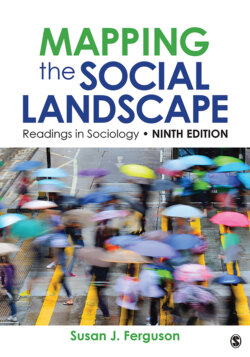Читать книгу Mapping the Social Landscape - Группа авторов - Страница 100
Icons of Femininity
ОглавлениеA range of activities and attributes considered atypical for boys were met with negative responses, and for a few parents (3 of 31 parents of sons) this even included the kind of domestic toys and nurturance noted above. But more common were negative responses to items, activities, or attributes that could be considered icons of femininity. This was strikingly consistent with Kimmel’s (1994: 119) previously noted claim that the “notion of anti-femininity lies at the heart of contemporary and historical constructions of manhood,” and it bears highlighting that this was evident among parents of very young children. Parents of sons reported negative responses to their sons’ wearing pink or frilly clothing; wearing skirts, dresses, or tights; and playing dress up in any kind of feminine attire. Nail polish elicited concern from a number of parents too, as they reported young sons wanting to have their fingernails or toenails polished. Dance, especially ballet, and Barbie dolls were also among the traditionally female activities often noted negatively by parents of sons. Of the 31 parents of sons, 23 mentioned negative reactions to at least one of these icons.
In relation to objects such as clothing and toys, the following responses are typical of the many concerns raised and the many indications of actions parents had taken to accomplish gender with and for their sons:
He’s asked about wearing girl clothes before, and I said no…. He likes pink, and I try not to encourage him to like pink just because, you know, he’s not a girl…. There’s not many toys I wouldn’t get him, except Barbie, I would try not to encourage that. (white, low-income, heterosexual mother)
If we go into a clothing store…. I try to shy my son away from the Powerpuff Girls shirt or anything like that…. I would steer him away from a pink shirt as opposed to having him wear a blue shirt. (Asian American, middle-class, heterosexual father)
These quotes are typical of many instances in which parents not only specify the items that strike them as problematic but clearly indicate the actions they take in accomplishing gender. In the first quote, the mother indicates her actions in encouraging and discouraging various outcomes, while in the second, the father reports “shying away” and “steering” his young son.
Playing with nail polish and makeup, although tolerated by some parents, more often evoked negative responses like this one, from a white, upper-middle-class, gay father, speaking about his four-year-old son’s use of nail polish: He put nail polish on himself one time, and I said “No, you can’t do that, little girls put nail polish on, little boys don’t.”
Barbie dolls are an especially interesting example in that many parents reported positive responses to baby dolls, viewing these as encouraging nurturance and helping to prepare sons for fatherhood. Barbie, on the other hand, an icon of femininity, struck many parents of sons as more problematic. Barbie was often mentioned when parents were asked whether their child had ever requested an item or activity more commonly associated with the other gender. Four parents—three mothers and one father—indicated that they had purchased a Barbie at their son’s request, but more often parents of sons noted that they would avoid letting their son have or play with Barbie dolls. Sometimes this negative response was categorical, as in the quote above in which a mother of a three-year-old son noted that there’s not many toys I wouldn’t get him, except Barbie. A father offers a similar negative reaction to Barbie in relation to his two young sons: If they asked for a Barbie doll, I would probably say no, you don’t want [that], girls play with [that], boys play with trucks (white, middle-class, heterosexual father)….
Along with material markers of femininity, many parents expressed concern about excessive emotionality (especially frequent crying) and passivity in their sons. For example, a white, upper-middle-class, heterosexual father, concerned about public crying, said about his five-year-old son, I don’t want him to be a sissy…. I want to see him strong, proud, not crying like a sissy. Another father expressed his frustration with his four-year-old son’s crying over what the father views as minor injuries and indicated action to discourage those tears: Sometimes I get so annoyed, you know, he comes [crying], and I say, “you’re not hurt, you don’t even know what hurt is yet,” and I’m like “geez, sometimes you are such a little wean,” you know? (white, middle-class, heterosexual father).
Passivity was also raised as a concern, primarily by fathers. For example, one white, middle-class, heterosexual father of a five-year-old noted that he has told his son to stop crying like a girl, and also reported encouraging that son to fight for what he wants: You just go in the corner and cry like a baby, I don’t want that. If you decide you want [some] thing, you are going to fight for it, not crying and acting like a baby and hoping that they’re going to feel guilty and give it to you.
A mother who commented negatively about passivity even more directly connected her concern to how her son might be treated: I do have concerns…. He’s passive, not aggressive…. He’s not the rough and tumble kid, and I do worry about him being an easy target (white, working-class, heterosexual mother).
Taken together, these various examples indicate clearly the work many parents are doing to accomplish gender with and for their sons in a manner that distances those sons from any association with femininity. This work was not evident among all parents of sons. But for most parents, across racial, class, and sexual orientation categories, it was indeed evident.
